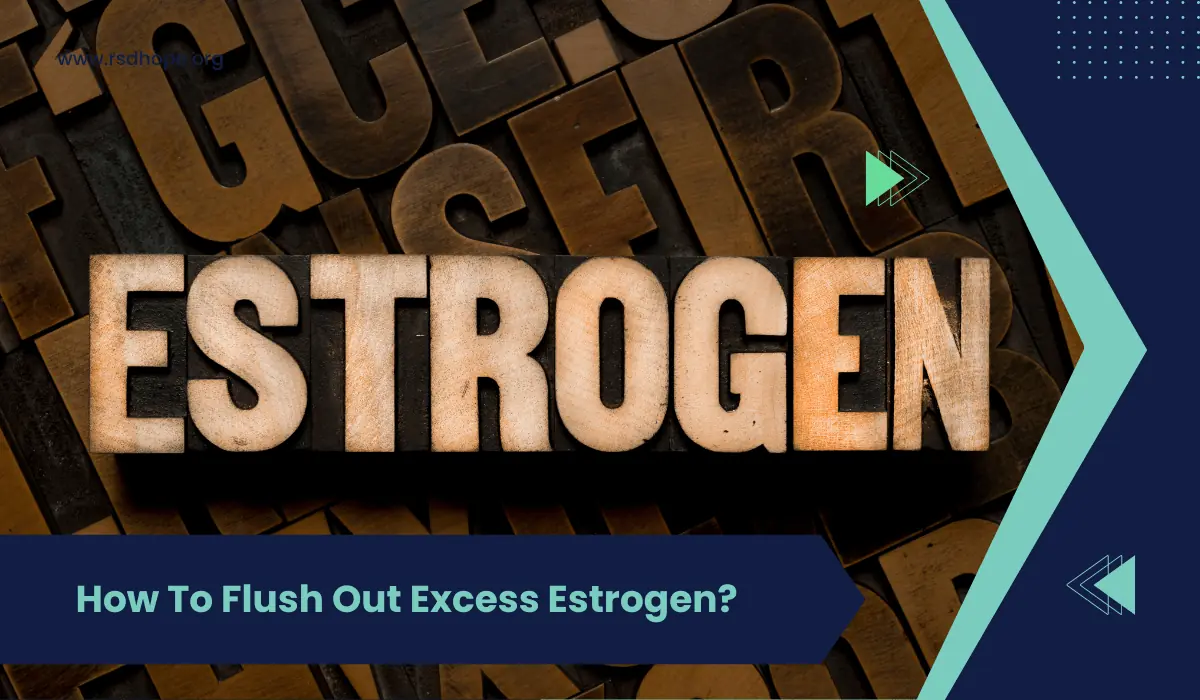Estrogen, a vital hormone in the body, plays a crucial role in various functions, including reproductive health, bone density, and mood regulation. While estrogen is essential for both men and women, maintaining balanced levels is key to overall well-being. When estrogen levels become too high, it can lead to a range of health issues, such as weight gain, mood swings, and an increased risk of certain cancers. In this blog post, we’ll explore nine natural ways to help flush out excess estrogen and promote hormonal balance.
Key Takeaways
- Maintaining balanced estrogen levels is crucial for overall health and well-being.
- Simple lifestyle changes, such as eating a balanced diet rich in fiber and exercising regularly, can help flush out excess estrogen naturally.
- Consulting with a healthcare provider is essential for personalized advice and treatment options when dealing with hormonal imbalances.
How To Flush Out Excess Estrogen?
1. Eat a balanced diet rich in fiber
One of the most effective ways to flush out excess estrogen is by incorporating plenty of fiber into your diet. Fiber helps bind to estrogen in the digestive tract, preventing it from being reabsorbed into the bloodstream.
Aim to include a variety of fiber-rich foods, such as fruits, vegetables, whole grains, and legumes, in your daily meals.
2. Include cruciferous vegetables in your meals
Cruciferous vegetables, like broccoli, cauliflower, and Brussels sprouts, contain a compound called indole-3-carbinol (I3C), which has been shown to support the breakdown and elimination of excess estrogen (Marconett et al., 2011).
Try to incorporate these vegetables into your diet at least a few times a week to reap their hormone-balancing benefits.
3. Limit alcohol consumption
Alcohol consumption can interfere with the body’s ability to metabolize and eliminate estrogen effectively. To help flush out excess estrogen, it’s important to limit your alcohol intake.
If you do choose to drink, opt for moderation and try to stick to no more than one drink per day for women and two drinks per day for men.
4. Keep hydrated by drinking plenty of water
Drinking an adequate amount of water is essential for flushing out toxins and excess hormones from the body. Aim to drink at least 8 glasses of water per day to support your body’s natural detoxification processes.
You can also incorporate other hydrating fluids, such as herbal teas and low-sodium broths, to help meet your daily fluid needs.
5. Exercise regularly
Regular physical activity can help regulate hormone levels and promote the elimination of excess estrogen. Engage in a combination of cardiovascular exercises, like brisk walking or cycling, and strength training to support overall hormonal balance (Sato et al., 2017). Aim for at least 30 minutes of moderate-intensity exercise most days of the week.
6. Manage stress levels
Chronic stress can disrupt hormone balance and contribute to excess estrogen levels in the body. Implementing stress management techniques, such as deep breathing, meditation, or yoga, can help regulate cortisol levels and support overall hormonal health.
Make time for relaxation and self-care activities that help you unwind and reduce stress.
7. Avoid exposure to xenoestrogens
Xenoestrogens are synthetic compounds that imitate estrogen’s effects in the body. These compounds can be found in various products, such as plastic containers, cosmetics, and pesticides.
To minimize your exposure to xenoestrogens, opt for glass or stainless steel containers, choose natural and organic personal care products, and wash your produce thoroughly to remove any residual pesticides.
8. Consider natural supplements like DIM or calcium-d-glucarate
Certain natural supplements, such as diindolylmethane (DIM) and calcium-d-glucarate, have been shown to support the elimination of excess estrogen. DIM, a compound derived from cruciferous vegetables, helps balance estrogen metabolism (Thomson et al., 2016).
Calcium-d-glucarate, on the other hand, supports the body’s natural detoxification processes. Before starting any new supplement regimen, consult with a healthcare provider to ensure safety and appropriate dosing.
9. Consult with a healthcare provider for personalized advice and treatment options
If you suspect that you have a hormonal imbalance or are experiencing symptoms related to excess estrogen, it’s crucial to consult with a healthcare provider. They can perform necessary tests, such as blood work or hormone panels, to determine your estrogen levels and provide personalized advice and treatment options based on your individual needs.
Also Read: Can A Yeast Infection Delay Your Period? Exploring the Connection
Conclusion
It’s crucial to maintain balanced estrogen levels for overall health and well-being. By making simple lifestyle changes, such as eating a fiber-rich diet, exercising regularly, and managing stress, you can help flush out excess estrogen naturally.
Additionally, avoiding exposure to xenoestrogens and considering natural supplements under the guidance of a healthcare provider can further support hormonal balance. Remember, everyone’s body is unique, so it’s important to consult with a healthcare professional for personalized advice and treatment options when dealing with hormonal imbalances.
FAQs
A: Common symptoms of excess estrogen include weight gain, mood swings, irregular periods, bloating, and breast tenderness. If you experience these symptoms persistently, consult with a healthcare provider for proper diagnosis and treatment.
A: Yes, men can also have high estrogen levels, which can lead to symptoms such as gynecomastia (enlarged breast tissue), decreased libido, and erectile dysfunction. Maintaining hormonal balance is important for both men and women.
A: The time it takes to see results can vary depending on individual factors and the specific methods used to flush out excess estrogen. Some people may notice improvements within a few weeks, while others may take several months. Consistency and patience are key when working to balance hormone levels.
A: Yes, having excess estrogen can increase the risk of certain health conditions, such as breast cancer, ovarian cancer, and endometrial cancer (Sampson et al., 2017). It can also contribute to other issues, such as infertility and blood clots. Regular check-ups with a healthcare provider can help monitor hormone levels and identify any potential risks.

